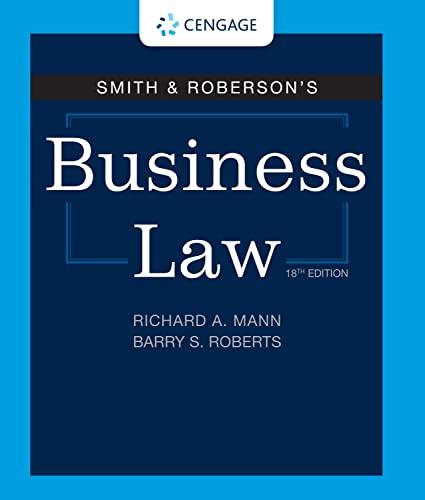Question
Hey! I'm working on an assignment (essay). ESSAY TOPIC The prescriptive nature of Community Treatment Orders (CTOs) has led to a debate about the coercive
Hey! I'm working on an assignment (essay). ESSAY TOPIC
The prescriptive nature of Community Treatment Orders (CTOs) has led to a debate about the coercive nature of this legislative development. This debate helps to show the interface between ethics and the law in mental health practice: on what basis is it just to lawfully deprive a person of freedom(s)?
MY QUERIES: I'm asking for your insights in terms of reviewing my answer, as per the table given below.
Also, need your insights in whether my answer seems like I have critically analyse it or not.
Moreover, in the context of my answer, my question is I have shared both the perspectives (UNCRPD and NSW Mental Health Act 2007) and I have stated that MH Act is in contradiction of UNCRPD but I am not sure of how to provide reasons for the same, as in shall I state some specific sections from MH Act only or can I provide references of some qualitative data to prove my point.
Answer:
Section on CTOs: S. 51 of the Mental Health Act 2007 (NSW) states that a Community Treatment Order (CTO) is a court order that requires a person to receive compulsory mental health treatment in the community. A tribunal issue it. Authorised medical officials, clinicians familiar with the patient's clinical history, and other approved personnel may request this order as regulations outline. People in community settings or mental health facilities may be eligible for CTOs, even if they currently have one. They may be incorporated into Tribunal proceedings as an appeal and are usually issued in response to inquiries about mental health, Tribunal reviews, or other pertinent applications.
According to New South Wales' (NSW) existing Mental Health Legislation, forceful treatment of people with mental illness is permissible if a doctor determines that a patient poses a danger of harming himself or others. Important considerations, including the severity of the patient's illness and their ability to make treatment decisions for themselves, are ignored by this standard for compulsory treatment. Therefore, this strategy runs the risk of depriving those who genuinely need treatment and even forcing others to undergo treatment and detention against their will, even in cases when their refusals may have been justifiable. As a result of placing perceived risks above a thorough assessment of the patient's condition and autonomy, the Act may create moral and practical difficulties for those providing mental health treatment in New South Wales (Callaghan & Ryan, 2012).
NSW Mental Health Act conflicts with both equality ideals and human rights commitments. The law violates Article 1 of the UN Convention on the Rights of Persons with Disabilities (2006) by discriminating against individuals with disabilities and failing to take into account a person's capacity for decision-making when assessing coercive treatment. When Australia joined the UNCRPD in July 2008, it committed to implementing policies that guarantee equal protection under the law. Moreover, Article 4(1)(b) of the Convention requires that all discriminatory laws and practices be repealed or amended. However, the laws that are in place now, especially Community Treatment Orders (CTOs), do not match these requirements, which might be a violation of the rights of Australians who suffer from mental illness. Article 5 of UNCRPD expressly protects the right to freedom from discrimination and equality before the law. Furthermore, Article 12 states that everyone has the same right to be recognised for their legal ability and to receive assistance using that capacity. Articles 14 and 15 provide additional guarantees of freedom of movement, humane treatment while deprived of liberty, and protection against cruel, inhuman, or degrading treatment (United Nations Convention on the Rights of Persons with Disabilities, 2006). Nonetheless, the notion of Community Treatment Orders (CTOs) directly opposes these essential individual liberties protected by the Convention.
| You might have a section on CTOs | What are they, what do they look like in the state you are residing in (e.g. NSW), who can make them, what their role is, their primary outcomes, consider the question of whether they conflict with human rights and social justice and if so, how? Consider providing and explanation and examples of human rights legislation where there may be a conflict. |
Step by Step Solution
There are 3 Steps involved in it
Step: 1

Get Instant Access to Expert-Tailored Solutions
See step-by-step solutions with expert insights and AI powered tools for academic success
Step: 2

Step: 3

Ace Your Homework with AI
Get the answers you need in no time with our AI-driven, step-by-step assistance
Get Started


